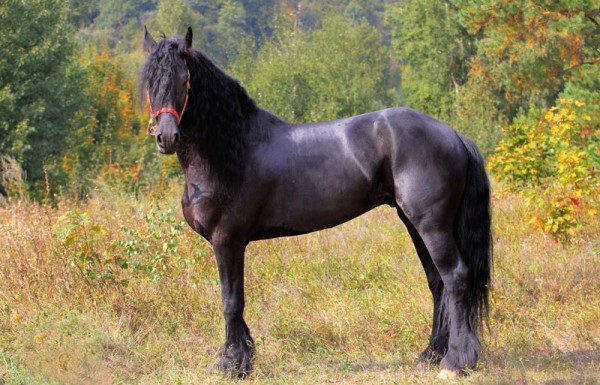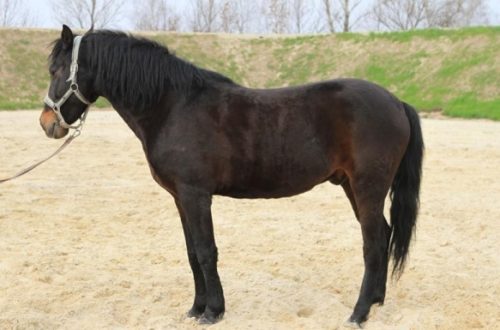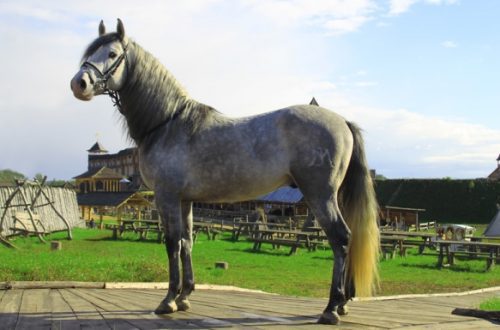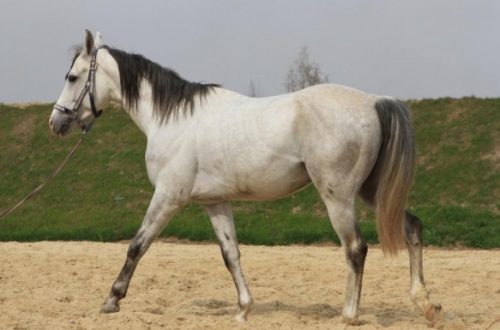
Friesian breed

History of the breed
The Friesian horse breed is one of the oldest and most beautiful European draft horse breeds. This breed has a long and complex history, having experienced ups and downs in its lifetime, but is now at the peak of its popularity.
Her homeland is the Friesland region in the north of Holland. In these places, bones of an ancient type of heavy horses were found, the descendants of which are considered to be modern Frisians.
Many references to Friesian horses have been found in Roman documents, including Julius Caesar and Tacitus. The distant ancestors of modern Frisians were strong, versatile, but not so beautiful. It is believed that the Friesian breed of horses owes its aesthetic appeal to the influence of oriental blood. Later records and illustrations dating back to the Middle Ages describe the Frisians as large, heavy and at the same time noble war horses – faithful companions in the crusades and jousting tournaments.
Friesian horses had excellent working qualities: heavy enough to carry a rider with all the equipment, but at the same time agile and frisky. Over time, they acquired a harmonious physique and became one of the most common breeds used in military affairs. Friesian horses were exported to England and Norway, where they influenced the formation of other breeds, such as the Shire.
Also later, the Frisians influenced the appearance of trotting qualities in Oryol horses. In addition, the Oryol trotter inherited some exterior features from the frieze: large growth and bony legs with large hooves, decorated with brushes.
A new stage in the development of the Friesian breed began during the war between Holland and Spain. As a result of the influx of Andalusian and partly Arabian blood to the Friesian horses, they began to look even more elegant and majestic. The gait has also improved: the Friesian horses began to walk at a very frisky, but smooth trot. In this era, the purpose of the Friesian horses changed – now they began to be used for peaceful purposes as carriage horses. Here, the unique qualities of the Friesian horses were most in demand: a combination of strength and agility, a beautiful gait and a harmonious exterior.
In the late Renaissance, Friesian horses were considered a breed of nobility: they were used for parade trips by the royal courts of the Netherlands, Denmark, and Luxembourg.
Today, Friesian horses are the only draft breed in the world that is regularly used in dressage competitions. At the same time, they have not lost their original purpose and are used in team competitions, and are also part of the royal stables of Denmark, Luxembourg, and the Netherlands.
Features of the exterior of the breed
Friesian horses are large in size (height at the withers 158-165 cm), bony, but elegant and high-legged. Their weight is 600-680 kg. The head is large, long, with a straight profile and rather long ears. The eyes are expressive, dark. The neck is muscular, powerful, but at the same time gracefully arched, with a very high set. The withers are long and well developed. The chest is long, deep, moderately wide. The body is somewhat elongated, the back is long, often soft. The limbs are long and strong. The skin of the Frisians is quite thick, the coat is short and shiny.
The Friesian breed is characterized by an unusually thick and long mane and tail, as well as well-defined brushes on the legs. These brushes start quite high and fall in thick tufts to the very hooves. This feature is primarily characteristic of the Friesian horses and migrated to other breeds called freesiness. This gives them a “fabulous” look. It seems that Friesian horses have descended from the pages of chivalric novels.
Previously, Friesian horses were found in different colors (black, bay, gray, chubar), but as a result of several crises suffered by the breed, the genetic diversity has decreased and modern Friesian horses are exclusively black.
There is even a peculiar tradition among breeders – never pull or cut either the tail, or the mane, or the brushes of the Friesian horses, so that they often grow to the very ground.
The temperament of the Friesian horses is lively, energetic, but without excessive fervor, like all heavy trucks, the Frisians are balanced, obedient to the rider, calm and good-natured. Another advantage of the breed is their moderate unpretentiousness: these horses tolerate climate change well, although they are more demanding on the quality of feed compared to other heavy trucks.
Applications and achievements
Currently, Friesian horses are widely used for team competitions, dressage, and circus performances. Often, horses of this breed can also be found on the set of historical films – who, if not the Frisians, can better convey the atmosphere of the Middle Ages! In addition to sport, Friesian horses are often used in amateur rental: they are often kept as pets and used for horse rides by untrained riders. Thanks to their comfortable gait and calm disposition, these horses are very reliable for beginner riders.
All over the world, Friesian horses are favorites of the circus public and fans of the increasingly popular carriage sport. And in their homeland, in the Netherlands, the team of Frisians traditionally opens the annual session of Parliament as part of the official royal departure.
Specialists and breeders of Friesian horses are proud that, since 1985, the Royal Stables of Great Britain have also kept Friesians. As a result, on the third Tuesday of September 1989, for the first time in history, Friesian horses carried the Royal Golden Carriage on the occasion of the opening of Parliament.
Friezes were part of the six horses harnessed to the Royal Carriage at the opening ceremony of the World Equestrian Games in The Hague in 1994.





